THE CANNON



EDITOR-IN-CHIEF
Tobin Zheng
CONTRIBUTORS
writing
Alex Klaus
Christina Pizzonia
Tudor Sigmund
Charlie Therence
Jenn Xu
editing
Sophia Hill
Prantika Saha
art
Lu Dinder
Emaan Fatima
Zack Fine
Iva Guo
Albert Huang
Melanie Liu
SPECIAL THANKS
Jennifer Wu
All Solutions Printing
The Cannon is the official magazine of the University of Toronto Engineering Society
The views expressed herein are those of their authors, and do not necessarily reflect those of the Engineering Society.
Contact us at cannon@skule.ca to contribute!
Over the past year, I have had the pleasure of serving as your 2T4-2T5 Cannon Editor-in-Chief. If you told me in my first or second year that I would end up in this position, I definitely would not have believed you. My journey at Skule has taken many twists and turns, but it’s been a wonderfully exciting experience overall. I am so glad I had the opportunity to shape the Cannon and into a place where engineering students can share their passions with the community through the mediums of literary and visual arts. I get to read all the articles as I review them and do layout, and I have learned so many new things with every issue we publish.
Spring is a time when life begins to flourish. Leaves bud on trees, insects emerge, and everything looks a little less grey. It might feel a little odd that the theme is Requiem—the darkness of death and the calm quiet of rest would perhaps be more suited to a somber November. But spring marks the end of the school year, and for me, the end of my entire undergraduate career, so it also can be a time of reflection.
I’ve always had a fascination with mortality (it’s not just that skulls and ghosts are cool, although I will not apologize for the fact that I think so—life is too short to be embarrassed about your aesthetic taste). Everybody is given a limited time on this planet, and each day we choose how to use that precious time. That’s a mentality I lived with throughout my time here, and I used that to seize every opportunity and commit myself to as many things as possible, filling my days with activities from the moment I opened my eyes until late into the evenings. It definitely had its pros and cons—I’ve been a part of so many incredible things, but also often teetered on the edge of burning out. In the past few months, I’ve discovered new clubs and events at the university that I never knew existed (taking ArtSci electives really exposes you to a whole new world) and at first, I regretted not getting involved in those. But then I remembered how many things I did do, and how my schedule was always packed to the brim already—each person can only fill their basket with so much. So yes, life is in fact short, and your undergrad years will fly by. But trying to be everywhere and do everything is a one-way ticket to Burnout Town. Instead, be careful and deliberate with how you spend your time. I always encourage people to take the plunge and try new things, but if you find that a role or responsibility isn’t what you’d hoped it was, don’t be afraid to leave (but seriously, tell people you’re backing out—nobody likes getting ghosted). Don’t waste your limited time on projects that drain you and people who don’t appreciate you.

As the academic year comes to a close and many Skule™ roles are in transition, I also encourage you to reflect on your time here. It’s a fantastic time to think about what you want to continue doing, what you want to leave behind, and if there’s anything new you’d like to start (this is true for grads too—this all goes beyond just extracurriculars). If you shape every upcoming year to be even better than the last (and better is subjective!), I think you’ll leave this place feeling fulfilled.
Tobin Zheng Editor-in-Chief, 2T4-2T5
Alex Klaus
In the age of the internet, nothing has been changed more than childhood. The critical time of growth, discovery and learning has been fundamentally altered. As children in today’s society, so much is now accessible, making it hard to actually slow down and focus. Since the year 2000, childhood has been fundamentally altered. As a human, I noticed that people born in 2000 who developed emotional regulation, empathy, thought processes, and relationships in an age before everything you do was shared to the world differ drastically in their thoughts with family born all the way through 2016. At the same ages, these family members, not even a full generation younger, are much more extreme in their actions and personalities, exaggerated for the ever-present stage of social media. As we grow up, some of us having been ipad kids, we can clearly see the lack of selfregulation come clear in our attitudes and thoughts. The depth of emotions we can feel is shrinking the day. The lack of growth
allowed and encouraged by the internet and its caricaturizing of people into one key characteristic.

The second death of childhood, growing up, has been heavily impacted as children are maturing later and having more jarring changes as they become adults. Responsibility is given more suddenly and is harder to adapt to. As a person, I have felt that without the responsibilities and changes being given early on, it’s harder to adapt to and you never feel ready for new responsibilities. With University, the responsibilities and opportunities, there is a new possibility to open up and learn after the tough and grueling pressures to get into university that high school pressures, our regulation is even further compromised as we learn to never take a break. The lack of nuance that we are forced to have through tryharding to succeed hurts the ability to manage life later on.

To discuss how childhood has died for them, a few first years have given their thoughts on the death of childhood for them as they come to university.

“How has the transition to university changed you?”
“The biggest thing is that it has made me happier, made me more responsible, and have a more fulfilling life due to the new freedoms and opportunities afforded to me by my new situation. To elaborate: High School felt suffocating due to the lack of opportunity and things to do. I felt I could have done better things with my time. It felt like my potential was wasted. The repetitive structure of High School gave a feeling of lack of control, which reinforced that I was a child, which I did not like. It was less responsibility, less work, but also less freedom than now.”
- Ethan Mao (ECE 2T8)
“As a commuter, I have realized that a 9-6 schedule every day is a big responsibility in balancing my time, in exchange for not having to learn many of the skills that those in residence have instead. In high school, I woke up 20 minutes before class, and now I consider the actions around me.”
- Adela Dinu (EngSci 2T8)
“Since I was in the MACs program at WLMAC, I feel that high school was a lot more intense than first year. I don’t think the death of childhood really exists for me yet, as my life has not changed that much since high school.”
- Sara Parvaresh Rizi (EngSci 2T8)
“The little things have changed, such as getting up, eating properly, laundry. Small extra responsibilities on top of the usual challenges of university. As we become adults, hedonistic adaptation will eventually happen. It will be different, but it becomes the day by day.”
- Robyn van Heerden (EngSci 2T8)
As we grow older, all of us change in different ways and at different speeds. University is a time both for maturing and to live life, whether we have ended our childhoods or never really had one under all the pressure of school.







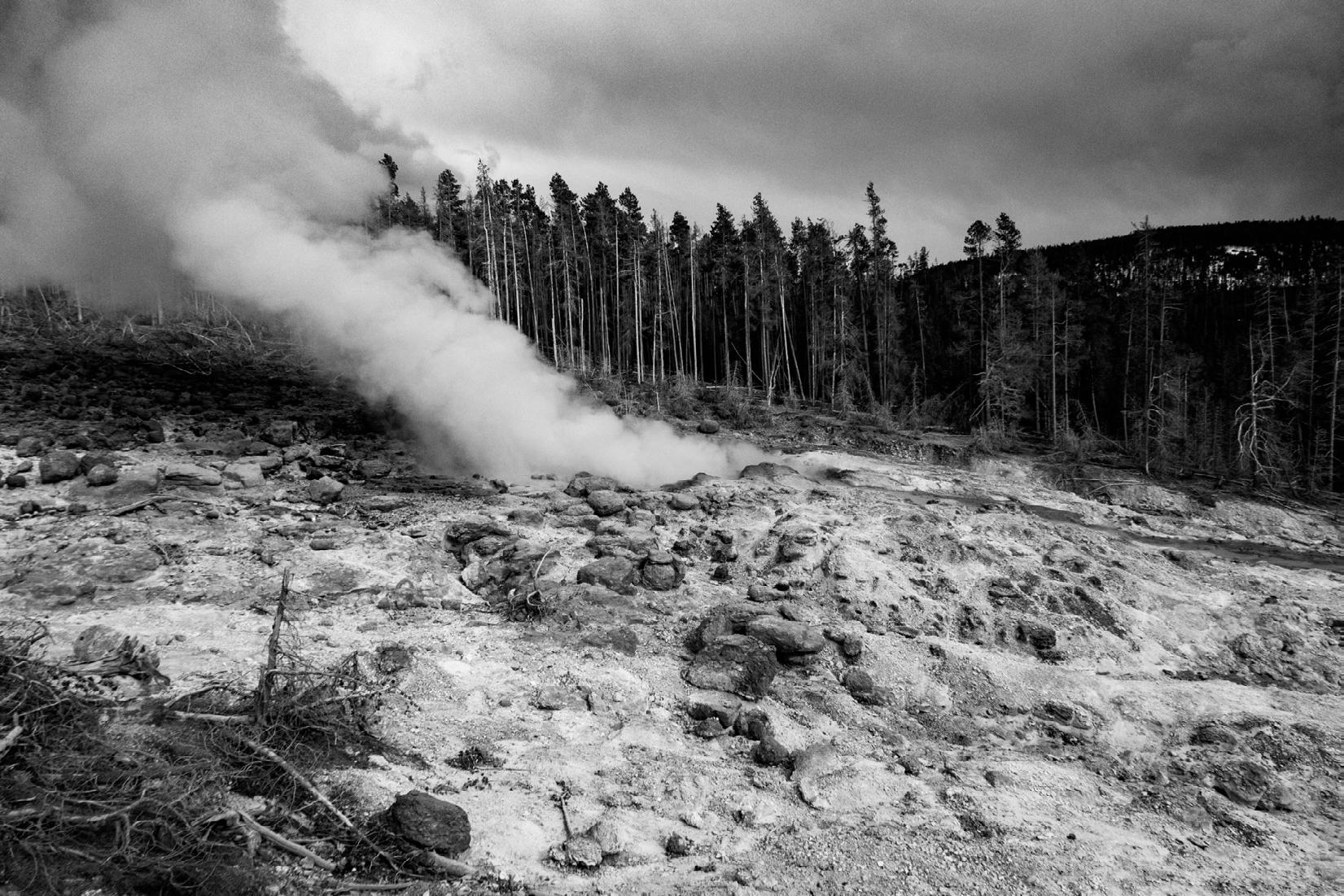
Christina Pizzonia
To be honest, I have never liked thinking about this question. For one, I am someone that very much enjoys having a consciousness and experiencing the world around me. The thought of one day just ceasing to exist–no thinking, no feeling, no nothing–is utterly terrifying.
Plus, “what happens after we die” is a question that never seems to have a definitive answer. Even individuals that have come close to dying (and have decided to share their stories on Reddit’s r/NDE) can’t seem to come up with a coherent answer. Some say they felt like they were under anesthesia, as if they were floating through a dreamless, painless sleep. Others claim they saw visions of “paradise” (whatever that looked like to them). At times, this question feels inescapable even in the mainstream media. The highly popular TV series ‘The Good Place’ dedicated an entire four seasons to imagining life after death.
The worst part of it is that death is by definition inescapable. I’ve always felt that this was intuitive even from a young age, having read (by virtue of the Ontario public education system) Bridge to Terabithia, The Outsiders, Flowers for Algernon… the list goes on and on. Death was always framed as something that could not be evaded, bringing the stories of many beloved characters to a swift but tragic end.
end up in Heaven. Muslims also believe in life after death, but hold that it is Allah who decides when a person dies. Souls remain on Earth until the judgment day, when the good will enter Jannah, a “garden of everlasting bliss.”
Hinduism rejects an afterlife altogether, maintaining that we live in a constant cycle of death and rebirth (samsara) and that reincarnation is possible. After death, souls (atman) will be reborn in a different body, depending on their actions over a lifetime. While religions vary in their beliefs, it’s somewhat comforting to know that those that came before us have spent time pondering the question of “what happens after we die” as well. Perhaps if we knew what came after death, the thought of dying wouldn’t be so overwhelmingly scary.
To be clear, I am in no way advocating for a belief in any of these ideas. But following in the logic of Blaise Pascal, if we believe there is some kind of higher power (and it turns out that there is one), we stand to gain everything. Yet if we remain steadfast in our belief that no higher power exists (but one actually does), we stand to lose everything. So why not take a leap of faith and believe in something?
All that is to say, if you act like you believe in some higher power, and that compels you to treat others with kindness, even if you’re wrong in your belief, you will still be a better person for it. No one can ever truly know who is right or

Jenn Xu
Throughout history, human emotion has been expressed through many creative mediums. Returning thousands of years into the past brings us face to face with art created to memorialize the average human life, which inevitably includes death. While the emotional associations with death may seem clear to most, the concepts surrounding death, ending, and requiem can manifest differently through different sets of eyes, especially through the eyes of artists. Through an analysis of four key artworks throughout history, these variances in artistic interpretations and representations of requiem will be illustrated from the past to the present.
In Francisco Goya’s painting The Third of May 1808, he depicts the slaughter of his countrymen at the hands of the French when Napoleon invaded Spain during the Napoleonic Wars. Some sources say that Goya had expressed French sympathies in the past; the advent and aftermath of the brutal invasion changed that permanently, as seen through his paintings The Second of May 1808 and The Third of May 1808, which tell the story of the invasion through his eyes.
Men cower in fear over the bodies of their fallen friends while one man stands strong in the center, staring down the barrel towards his inevitable death. The faces of their invaders are obscured—they do not need to be named. Their
bodies are enveloped in shadow, while the light is cast on his countrymen, clearly showing where Goya’s loyalties lie. With the absence of facial features and darkness blurring their presence, Goya effectively dehumanizes the French invaders to reveal the sheer brutality of the event.
Through masterful composition and colour, Goya illustrates a requiem for his fallen comrades, the rebels who fought against the French and held out until their blood ran through the streets of Madrid. This piece represents the death of Goya’s sympathy for the French, a somber tribute to the people who lost their lives in the invasion, and is one of the most famous pieces in modern art history to this day.

The Third of May 1808, Francisco Goya, 1814

Carondelet Diptych, Jan Gossaert, 1517
The genre of vanitas paintings comes from an older genre called memento mori, works which encouraged viewers to reflect on their own mortality. With a translation similar to “remember you must die”, these works reminded viewers that no beautiful or grand work of art could preserve their soul after death—it is only possible by leading a virtuous life. Vanitas serve a similar purpose—to remind one that conquests for power are unnecessary, since everyone is equal in the eyes of Death.
Jan Gossaert’s Carondelet Diptych shows a skull with a dislocated jaw sitting beneath words that roughly translate to “he who thinks always of death can easily scorn all things”. The dislocation of the jaw represents a separation of character from the mortal world post-death, and is suggestive of Gossaert’s disillusionment to the wants of man—namely the quest for material things, money, power, glory, and fame. The skull at the center must have been someone at one point in its life, but the viewer knows nothing of that life. Ultimately, it doesn’t matter; once dead, he leaves behind all the wealth he could have accumulated. The enclosed framing of the piece makes for an intimate space where viewers are asked to reflect on the statement made, as if they are being questioned by the fractured skull.
In Jan Gossaert’s eyes and through the cultural experience of the era he was alive, Death is the great equalizer. His requiem for the dead is simply the recognition that those passed once existed, and a reminder to those alive to avoid greed, gluttony, and all other sin compelled by temporary pleasures.
What does a requiem for something that is not dead look like? What does it mean to have lived?
The Meiji Restoration was a period of Japanese history with great cultural shifts as Japan’s feudal system collapsed and its borders reopened for trade from international pressure. Wanting to “catch up” to the rest of the world, namely the Western world (i.e. Europe and America), Japan rapidly modernized. More advanced technology was introduced and fast-tracked, artistic values shifted to align with those under the European definition of “fine art”, and tradition was left behind. Amidst these great cultural changes, artists like Kobayashi Kiyochika mourned the loss of Edo Japan—a time of art, creativity, and beauty.
In a series of polychrome woodblock prints, Famous Places of Tokyo renders Kobayashi’s visual eulogy for Tokyo. Through a traditional medium no longer favoured in Meiji Japan, he shows a variety of locations throughout Tokyo under Meiji rule. The city has changed, but remains on the same soil, inhabited by the same people. The depiction of Tokyo is particularly interesting through Kobayashi’s eyes. He retreated to the countryside near the start of the Meiji Restoration after the Tokugawa shogunate, the political leaders whom he had sided with, had been overthrown. These woodblock prints were made on his return to Tokyo years later, only to find that the place had changed almost beyond recognition. It is a death of sorts, of one way of life and one culture to make way for another. Through the use of cooler colours and his playing with light and shadow—a technique introduced from Europe— Kobayashi’s requiem pays homage to what Tokyo once was, yet slowly welcomes the changing of times.
Marilyn Monroe is known as the most photographed face to date. Her popularity and fame transcends time, geography, and even death. The Marilyn Diptych by artist Andy Warhol is one of the most famous pieces under the pop art genre and is Warhol’s commentary on fame, death, and his requiem to Monroe.
The Marilyn Diptych was created just four months after her death. Warhol creates multiple silkscreen prints of her and places them side by side in a diptych structure. On the left side, she is stylized in the pop art style— full of bright colours and definition in her features. On the right side, her headshots become grey, obscured, and more and more faded. Her repeated face represents her unyielding popularity and media presence over the course of her career and echoes the cult-like levels of fame she achieved throughout her lifetime. It is a commentary on

the objectification of famous figures who, through life and even after death, were never treated truly as people. Rather, they are objects of desire, icons, and symbols to represent something nonhuman. The fading out of her face on the right side symbolizes her death and leaves the viewer to question the chase for fame. Warhol’s diptych is his requiem for the death of a star, a piece of social commentary on the ethics of fame, and a possible criticism on the effects of the blind worship of idols in modern cult culture.
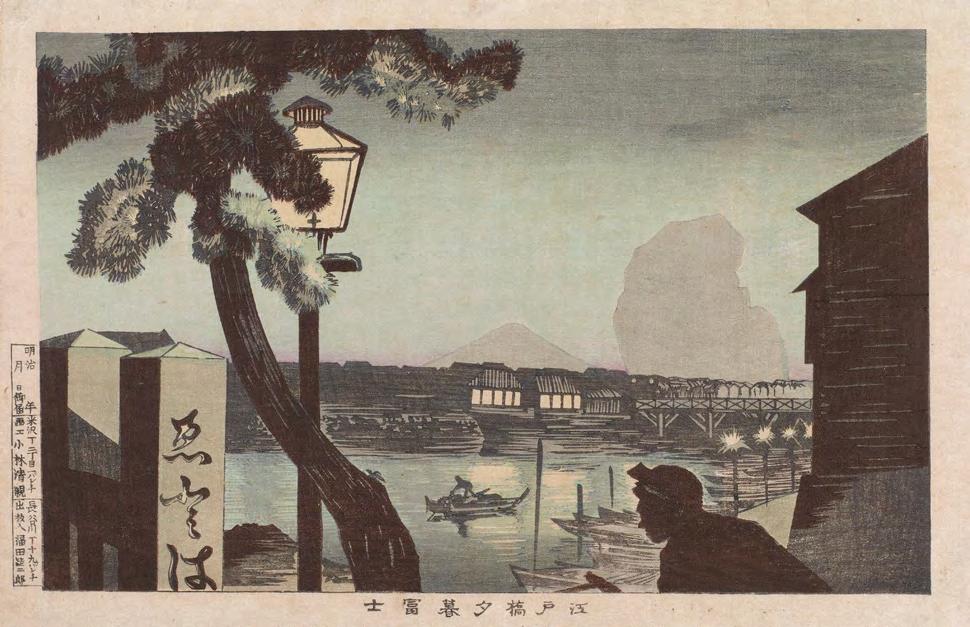


Charlie Therence
“I don’t get why you never tell us things.”
The laughter around the dining table dies out as four pairs of eyes stare in my direction. I’m afraid I spoke a beat too early.
My parents sigh as they say, “We don’t remember to tell you if you don’t ask us. Eat your food.” My sisters frown at me. I claw at my bare thighs and scold myself internally for killing the mood.
My parents never told me my grandmother died. My father’s mother. The only grandparent I ever met.
My carer broke the news to me a week after. Sitting on a bar stool, resting my arms on a kitchen counter, she scolds me for bothering my parents (“They’re sad”). I didn’t know.
I spend the rest of my life both curious and jealous at the mention of grandparents.

Sitting at a Vietnamese restaurant with my family, I point out some interesting decorations to my dad. He points to a sewing machine behind me.
“That’s a famous brand of sewing machines from a long time ago,” he explains. “I was young. My mom used it in her shop.”
I find out my grandmother was a seamstress. I think about this when I sew.
This article started off as a class assignment - a non-fiction piece about my family. After class, I texted my mom on the GO train. I knew I wanted to write a piece about my grandmother, but I didn’t know how to ask. My dad doesn’t like talking about his family, and it feels weird to ask my mom about his mom. I just asked her for ideas on what to write.
“Maybe your grandmother?” she says.
My grandmother was born in Hainan, China back in 1936. Hainanese Chicken Rice is one of my favourite dishes. I feel a sense of pride, but I digress. She was 3 or 4 when her family left China. They feared for the safety of the women in their family, but my mom doesn’t know why.
Upon searching up “Hainan 1939-1940”, I stumbled upon a Wikipedia page on the “Hainan Island Operation”. I learned of the Japanese occupation of Hainan in 1939. I learned of the base of operations established by the Japanese military. This led me to the Research Institute on Japanese Military Sexual Slavery. I learned of comfort stations constructed in Hainan. The “recruitment” of comfort women. My grandma would’ve been 3.
I brought this to my mom’s attention. She agrees this was likely the reason why my grandmother fled China, but we’ll never know for sure. My grandmother never told her kids why she left China.
My grandmother met my grandfather in Pontianak, and they moved to Jakarta—the capital of Indonesia—somewhere between 1955-1960. They opened a clothing business in a ‘Chinese mall,’similar to Pacific Mall in Markham. My grandparents made clothing and sold them to department stores. My grandmother would cut patterns out of fabric. My dad would watch the counter and deliver orders. He started tending to the store when he was very young, and I assume he never graduated from delivery to sewing. He still doesn’t know how to sew.
(Previous spread: Untitled Iva Guo)

My dad is the youngest child. In 1985, he finished high school,his older siblings have just started working, and my grandparents closed their business. Department stores preferred imported clothing from Bangkok – they were cheap. My grandpa grew ill.
I still haven’t gathered enough courage to ask my mom for my grandmother’s name. I haven’t asked about her death either. It feels evil to subject my parents to remembering a painful moment in their lives. But at the same time, I worry that the secrecy around my heritage means that memories of my grandmother will die with my dad.
But that could never be true. My grandmother’s past has left a lasting impact that shaped my life. Her memories could never die. She shaped my dad and, consequently, she shaped me. As I go through life, I’m moving with her hand guiding me.

My grandma and I c. 2005

Being an illegal immigrant and a survivor of a brutal Japanese occasion, my grandmother taught her family to not speak, keep their heads down, and leave no trace.
My uncle worries about the noise his door makes when it locks. He worries his neighbours might be able to tell that he left home.
My aunt is deathly afraid of hospitals. She refused to remove a tumour. She developed stage III cancer a few years later.
My dad panics when my dog barks. He worries he might get us in trouble with the neighbours. (“They might make us put him down!”)
My sister drafts a million messages before she musters the courage to ask for time off from work. It was for her wedding. She still feels bad about it.
I need 40 mg of fluoxetine to function. Without it, I would be living in a constant loop of making sure my house isn’t on fire.
I can’t help but feel like a cog in a machine. A machine for what exactly? Feels like it’s for absolutely nothing but misery and anxiety. I’d like to stop feeling this way someday.
Emaan Fatima



Melanie Liu

In central Canada, there is an unexpected graveyard where thousands of creatures lay at rest. Within the badlands of Alberta sits Drumheller, a town in the popular Dinosaur Valley, well known for its Royal Tyrrell Museum, where over 160,000 fossils are on display.
Although not typically associated with death, the natural graveyards of these ancient giants are inseparable from the remains that occupy them. Even our own ancestral relative is found here, the mighty dimetrodon. Dimetrodons are not direct ancestors of mammals, and look almost lizard-like, with claws, a giant back sail, and lying on all fours. The fossils of dimetrodon and other similar animals help to inform our modern society about our evolutionary past.

While death is usually thought of as grim and dark, the passing of the trillions of living beings on our planet is what led to our world today. Our beautiful natural world hides proof of their existence just under the surface.
Tobin Zheng
When I was four years old, my daycare gave all of the children soaps with pictures of themselves on them. When I brought mine home, I didn’t want to use it because then the picture would fade, so my mother placed it on a dish on the counter of our first-floor bathroom, tucked into the corner and saved for

soap shrunk and cracked
untouched state. Things that are rare, expensive, handmade, or beautiful are kept on display, waiting for the perfect moment to be used. What I’ve learned, however, is that the “perfect moment” often never comes. Use things that are meant to be used. There is so much joy to be found in drinking out of a vintage hand-painted teacup, laying on embroidered couch cushions, curling your toes around a colourful tufted rug, or drying dishes with printed tea towels. Their forms will change—facing scratches and stains, dirt and grime, chips and cracks—textures will smooth out and paint will fade away. Of course, things might break, but that’s a risk we take every time we use something.
The internet has only exacerbated this culture of preserving polished perfection. Fashion influencers with

so focused on preserving the soap and saving it for a special day that I completely missed that opportunity, letting the soap crumble into an unusable mass that had to be thrown away.
When I was 20 years old, I noticed a crow skull-shaped soap for sale at a table in Kensington Market. I thought it looked cool and smelled nice, so I bought it. I placed it in the soap tray in my shower and used it every time I showered, and the skull lost definition and volume over time. Eventually, it became little more than a triangular sliver, and then nothing at all. Although it did not remain in its original, beautiful form for long, it was a product meant to be used, so I used it. I appreciated it for its shape when I bought it, and for its purpose when I used it.
Now more than ever, there seems to be an obsession with the idea of keeping special items in a pristine,
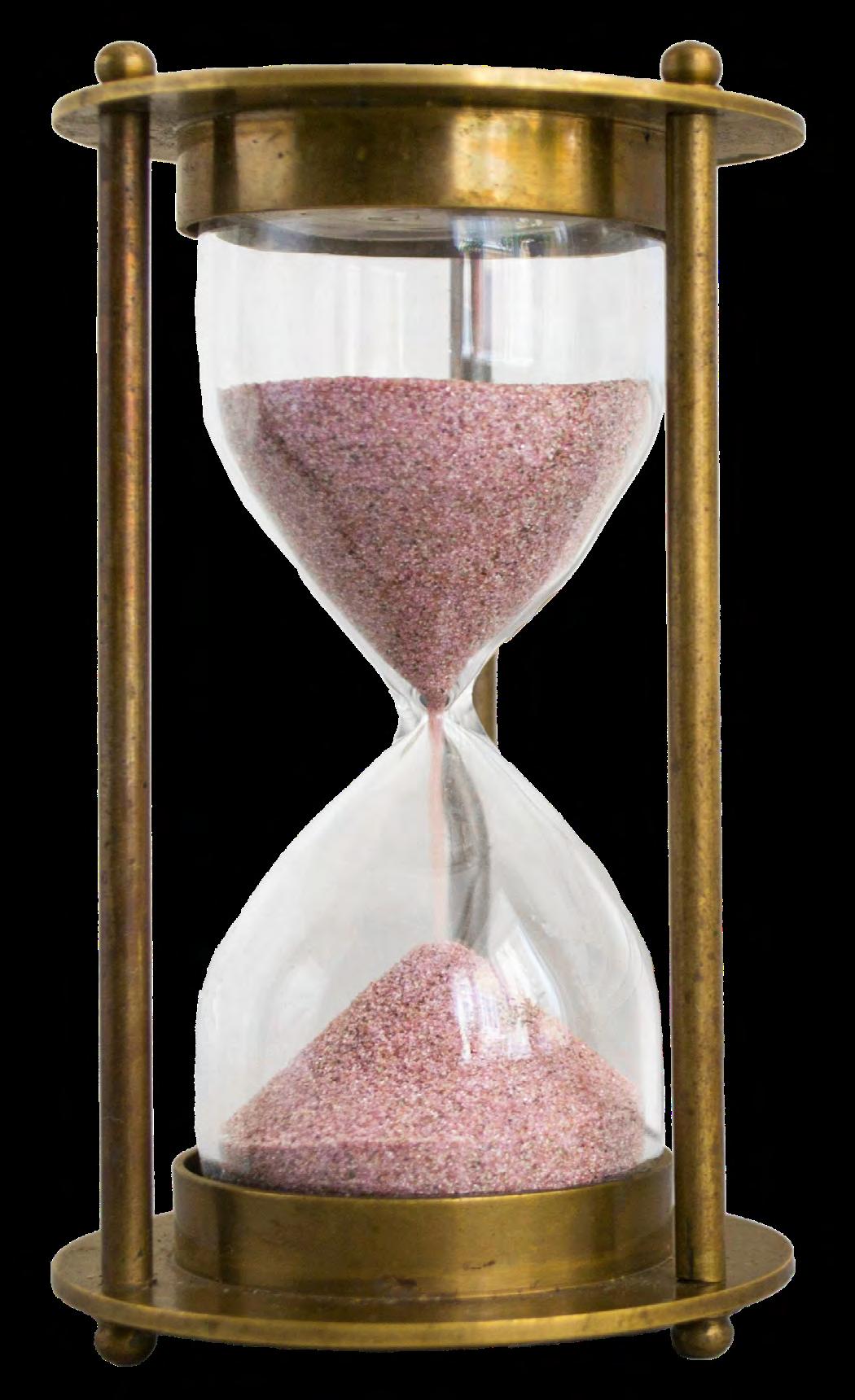
flawless skin are decorated in untarnished, symmetrical jewelry, draped in fluffy furs, and wear shiny, crisp leather boots. Stylists set out elaborate dining spaces with lace table runners, polished candelabras, and gilded porcelain. These moments are captured and preserved forever as ones and zeroes on platforms such as Instagram. But we only see these carefully curated snapshots—we don’t know how boring their day-to-day lives are. They could spend every day in hoodies and jeans, eating off of generic, massproduced plates. It seems to me like a miserable existence, to use only plain, replaceable objects in one’s everyday life, and save the curious and beautiful only to display for guests.
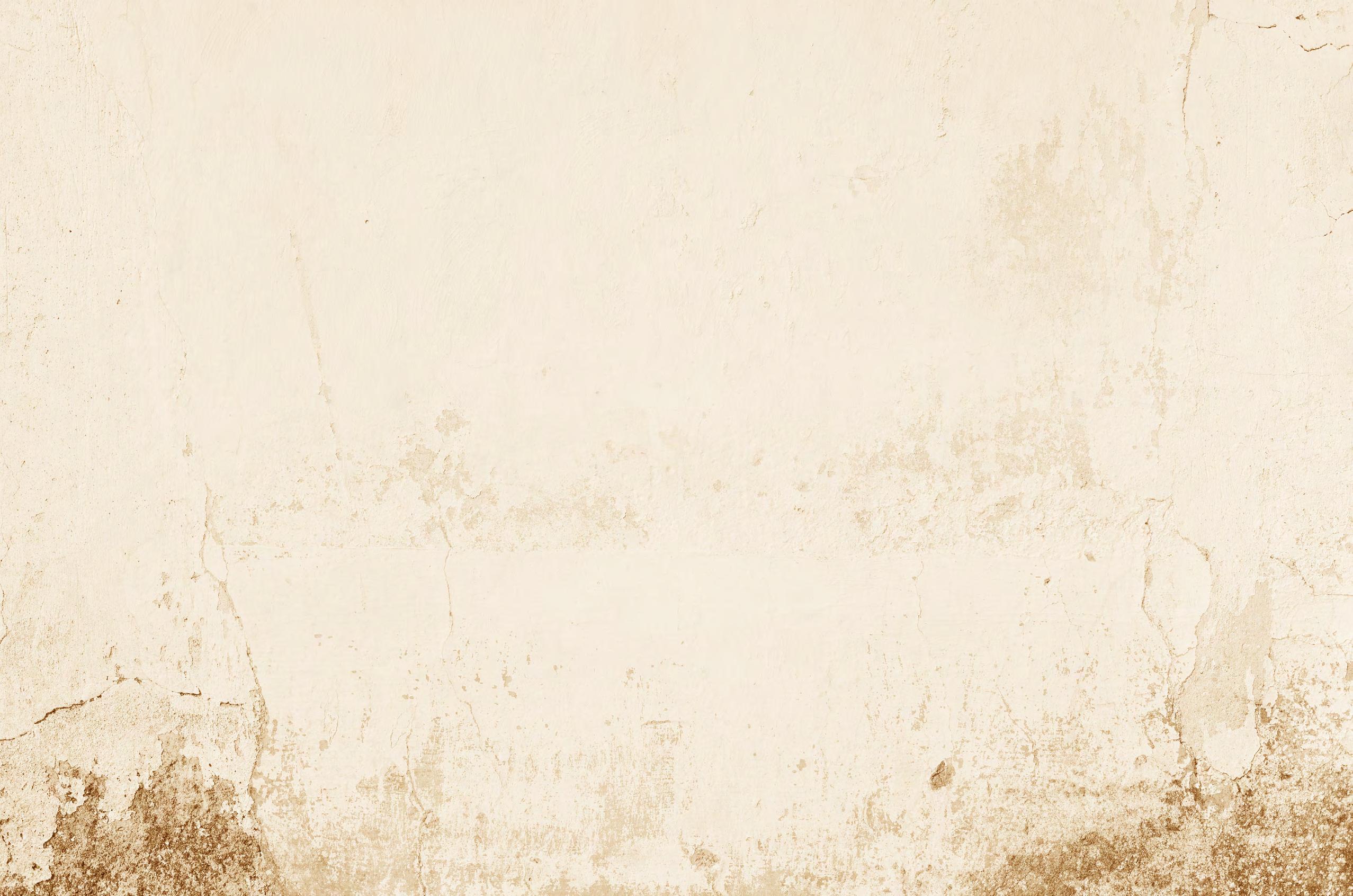
Collector culture is another place where treasured items are robbed from those who could cherish them the most. Action figures remain trapped in their original packaging, never experiencing the warmth of a child’s slightly sticky hands, never battling against or going to school with characters from a completely different franchise. They don’t even get to stand proudly on the shelf of a nerdy adult’s living room, illuminated by rainbow LED lights. All they do is sit in their prisons of cardboard and plastic, sheltered away from dust and moisture—and love— waiting for their monetary value to increase enough to be sold and shipped to somebody else who will continue to do the same. Collections should bring joy to their owners, not be an investment to profit from.
I’m not advocating against taking care of your belongings, as collectors do, in an attempt to extend their lifespan.

In fact, I very much believe in the opposite. Cleaning and maintenance lets you keep these beautiful items in your life for longer. Some are quick to dispose of a perfectly functional item because of surface-level imperfections or repairable damage. Although fixing something may change its outward appearance, it also introduces a unique flair that is delightful in and of itself. transformation of things as they are used is something I find to be magical. Just like scars on our skin or the rings in trees, the marks and chips and stains on our favourite belongings hold countless stories within. The scratches on my vintage watch face are from spelunking during various Skule retreats. My steel-toed leather Demonia boots have paint stains from late night builds in the Pit. Cured epoxy from multiple Tbog carbon fibre layups stiffen the ends of the sleeves on my covvies, a clothing item I have poured countless hours (and more money than I’d like to admit) into. They are tactile, physical encapsulations of memories. If that’s not magic, I don’t know what is.
I’m also drawn to the stories of others. One of the reasons I like thrifting or buying vintage items is knowing that a complete stranger must have used and perhaps even loved this thing once. I even prefer if something isn’t in mint condition (provided that it’s still clean and functional, of course). Stories are inscribed in scratches and stains, windows into a past life in which
we now get to live. They allow me to wonder about what kind of person owned it before and how those marks got there. Once it becomes a part of my life, its appearance will change as my own stories are embedded into it. Despite never having met, our lives are suddenly connected by this object.
Consumables are another thing that are often saved, whether it be for use on a special occasion or to keep on display indefinitely. But these things often expire or reduce in quality as time passes. Special days are already special. Why save everything for one day when you can add a little bit of magic to your mundane Monday morning with the cup of tea you bought from abroad or the artisan jelly you got for Christmas? Food and cosmetics aren’t the only things that expire. Designer clothes left in storage often fall victim to dry rot. The ink in expensive artists’ markers dries out. So use things, and use them up.
Our homes are not museums. They are living spaces, in both senses of the phrase, ever evolving with the people inside them. The things in a home will come and go, move and change, and deplete and break. Beautiful and special objects were often created with love and care—to use them and love them is also a demonstration of respect to its maker. Let your belongings bring joy and value to your life. Nothing lasts forever—as engineers, we’re all too familiar with the battle against natural degradation—so why stand aside and let your special things crumble to dust rather than welcoming their whimsical wonder into your every day? And when something does inevitably reach the end of its service life, it becomes easy to mourn its loss. But you won’t be mourning with regret—instead, it’ll be with bittersweet gratitude for the joy it brought to you over its lifetime.


Anonymous

all there was left at the end of the day was a pair of baby shoes that were bought but never worn, a carefully thought out letter that was left undelivered, because it’s receiver was no longer living there, eight boxes of chocolate (one for each year) that she can’t eat (he forgot about that), and a bouquet of flowers by a gravestone that were nothing but dead. there is blood on his hands that aren’t his, but of a friend he couldn’t save –it stains the shirt he got from his mom; she loved the way it looked. jewels that were once in the family now sold for cash, knowing they’ll never be returned – will they love it the same? and loneliness... the pure loneliness of realizing that person is no longer a friend. maybe it’s just a phase, at least that’s what his parents say when it’s not a girlfriend he brings back to his hometown, but a boy. and she, on no occasion, thought about her childhood bedroom until a puff of smoke is all there is in its place. they feel the earth shake, quake, when they hear about the diagnosis, or about the red light where someone couldn’t wait. you see the flowers under the streetlights, temporary markers of lives changed forever and ever. toys stuck in a bedroom, wondering when they’ll be taken out from underneath the bed, not knowing that there was, indeed, a last day. voices filled with condolences go in one ear and out the other, eyes looking out the window, hoping for an escape from this place. maybe all you need is a xanax and four glasses of wine to make it stop. a million tragedies in this world but yours is the one that echos, leaves you frozen, stuck in the war zone that is your life. but the day starts over again, whether you like it or not.
Tudor Sigmund
I think we’ve all had that moment in our lives when we felt so overwhelmed by everything around us that even taking a five-minute break feels out of reach.

take distance from what you’re doing gives your brain the time to do some background processing. Your brain will work on what you’ve been trying to do in the background, and you can focus on other things. Focus on your hobbies, your other interests, or even that YouTube video that you’ve been putting off for the last 3 weeks because you haven’t had a break in your schedule long enough to fit the entire video in. PRIORITIZE YOURSELF.
I think a huge reason why so few people around me choose to take breaks is because engineering glorifies selfsacrifice. It’s as if overworking yourself has some sort of leaderboard and spending entire days in 256 McCaul or pulling an all-nighter to study for your final the next day is the best way to top it. Students left and right constantly sacrifice themselves. I get it, there’s not enough time in the day to fit in all
Now wait a minute. A whole culture shift? How in the hell are we going to do that??? Well, I think that it has to start from the top. Upper year students need to show to lower year students that life is all about balance. You need to find that balance by exploring the things in life that you enjoy. Reset yourself so you’re prepared for that next midterm or build session.
It seems fitting for me to end this with a list of things that I personally do in order to relax. Give these a shot sometime, and who knows, maybe we can chat about one or two of them in the pit someday.
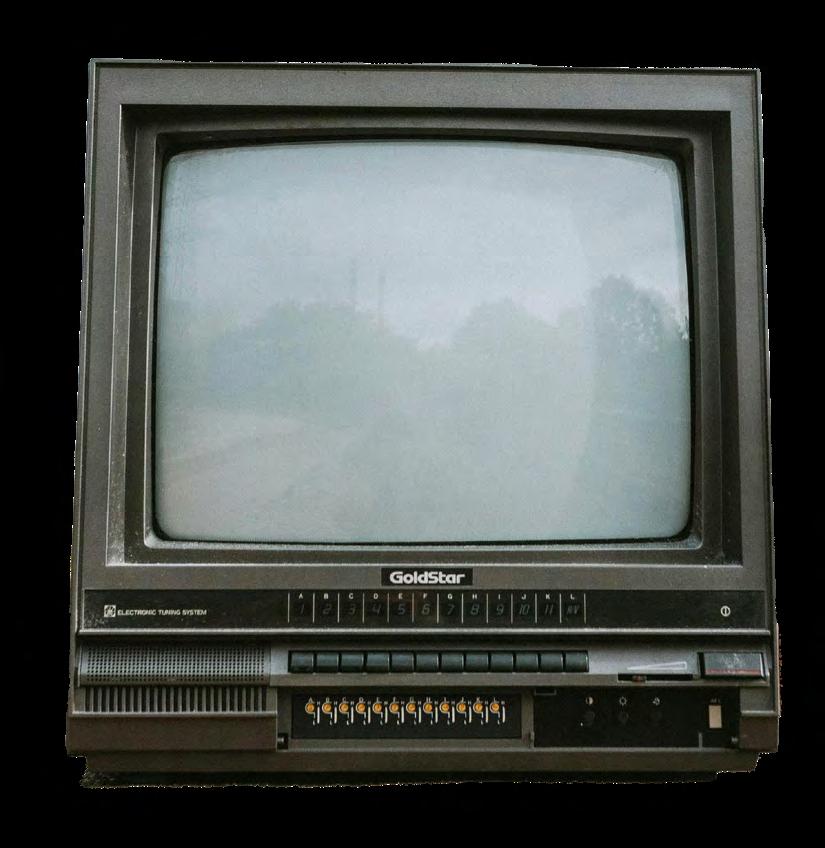

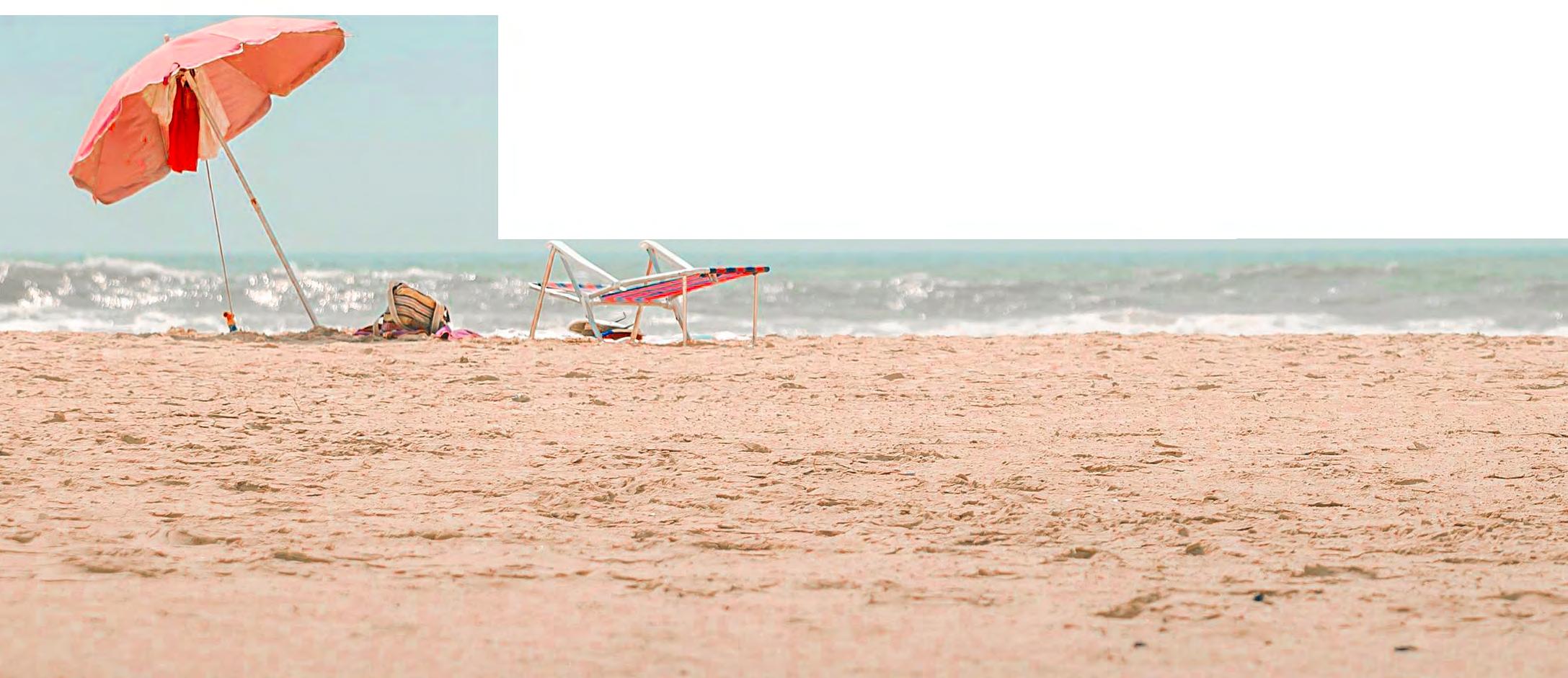


Tudor Sigmund 04 08 09 14 18 22
In the Age of the Internet
Alex Klaus What Happens After We Die?
Christina Pizzonia The Artist’s Requiem
Jenn Xu Oma
Charlie Therence Embracing the Ephemeral
Tobin Zheng
Get on your ass and take a break, you’ve earned it.

